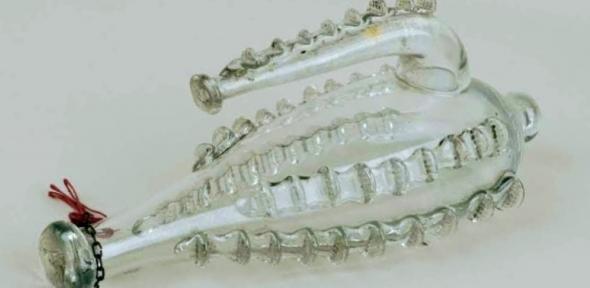Before the modern barometer was invented, simple devices like the 'Donderglas' (Dutch named 'thunder-glass') were used to anticipate thunderstorms using changes in air pressure. The Donderglas, sometimes called a 'Dutch water barometer' (above), was hung vertically and water was introduced through the spout until the water level inside the vessel was equal to that in the spout.
When atmospheric pressure increased, the level of the water in the spout would fall. When atmospheric pressure decreased, as in the case of an impending thunderstorm, the level of the spout water would rise. Glass buttons or pinches on the vessel acted as a scale.
Unfortunately, this type of weather-glass was susceptible to variations in temperature, causing water to expand or contract, and therefore it provided only a rough guide of local atmospheric activity.



